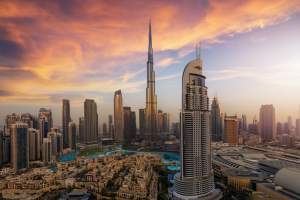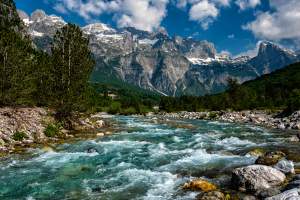
It’s not a future threat anymore. Climate change is reshaping travel — right now. Famous destinations once considered timeless are being altered by rising temperatures, stronger storms, drought, wildfires, and flooding. And in some cases, the things people came to see may not be around much longer.
Whether you’re planning a trip this year or thinking long-term, this isn’t just about sustainability. It’s about access, experience, and whether certain places can even handle tourism in the same way anymore.
Here’s how climate change is affecting iconic travel destinations across the globe — and what travelers need to know before booking.
1. Venice, Italy – A City That’s Sinking and Flooding
For years, Venice has been slowly sinking. But now, climate change is speeding things up.
- What’s happening: Higher tides and storm surges are flooding the city more often. MOSE, the barrier system designed to protect Venice, is working — but it’s not a long-term fix.
- Impact: Flooding disrupts access to St. Mark’s Square, public transport, and lower-level hotels. The city has also imposed a new entry fee for day-trippers to manage overtourism and support climate resilience.
Plan smart: Visit in shoulder seasons, stay multiple days, and expect to pay more as Venice invests in damage control.
2. The Alps – Skiing Is Shrinking
The Alps still offer world-class skiing. But the window is narrowing.
- What’s happening: Rising temperatures have pushed the snowline higher, shortened ski seasons, and increased avalanche risk due to melting permafrost.
- Impact: Low-elevation resorts are increasingly reliant on artificial snow — which isn’t sustainable long-term.
Plan smart: Head to higher-altitude resorts like Zermatt (Switzerland) or Val Thorens (France). Or, pivot to alpine hiking, which is booming in summer.
3. The Great Barrier Reef – Bleaching Events Continue
One of the planet’s most iconic ecosystems is fading fast.
- What’s happening: Rising ocean temperatures are causing mass coral bleaching — now nearly an annual event. Portions of the reef have lost significant biodiversity.
- Impact: Some reef tours now avoid the most-affected areas. Others focus on education and conservation.
Plan smart: Choose eco-certified operators that contribute to reef health and avoid tours that treat the reef as a disposable backdrop.
4. Yosemite and U.S. National Parks – Fire Season Is Now a Constant Threat
The American West is burning more frequently, and the seasons are longer.
- What’s happening: Drought, high winds, and heat have increased the frequency and intensity of wildfires in California, Oregon, and beyond.
- Impact: Closures, smoky air, and evacuation orders are now common in peak summer months.
Plan smart: Travel earlier in the year (spring) or shift to less fire-prone parks in the Midwest and Northeast. Always check active fire maps before heading out.
5. The Maldives – A Country Literally at Risk of Disappearing
This island nation is beautiful — and extremely vulnerable.
- What’s happening: The Maldives’ average elevation is just over 1 meter above sea level. Rising seas and stronger storms are threatening entire islands.
- Impact: Some resorts are building sea walls or even artificial islands, but the future is uncertain.
Plan smart: If the Maldives is on your list, don’t wait too long — and consider supporting resorts that contribute to coral protection and carbon neutrality.
6. Thailand’s Beaches – Overcrowded, Then Closed
Mass tourism was already overwhelming some of Thailand’s most famous beaches. Climate change made things worse.
- What’s happening: Increased temperatures, coral bleaching, and overtourism forced authorities to close Maya Bay (of “The Beach” fame) for multiple years.
- Impact: More closures are expected as authorities try to let ecosystems recover.
Plan smart: Explore less-hyped destinations like Koh Yao Noi or parts of Trang province — quieter, cooler, and more sustainable.
7. Iceland – Glaciers Are Melting Fast
The land of ice is losing the very glaciers that define it.
- What’s happening: Iceland has already lost dozens of glaciers in the past 20 years, and others are rapidly retreating.
- Impact: Some glacier hikes and ice cave tours are being shortened, rerouted, or canceled.
Plan smart: Visit responsibly, and prioritize glacier experiences while they’re still safe and accessible. Choose guides who follow climate safety protocols.
8. African Safaris – Shifting Animal Patterns and Drought
East Africa’s wildlife is adapting to climate shifts — but not all species are keeping up.
- What’s happening: Droughts are altering migration routes and breeding patterns. Water scarcity is pushing animals (and people) into closer competition.
- Impact: Some safaris are changing routes or facing unpredictability with game sightings.
Plan smart: Go with operators involved in conservation and community partnerships. Avoid operations that prioritize sightings over sustainability.
9. Patagonia – Glacial Retreat and Infrastructure Strain
Southern Argentina and Chile are seeing warmer temperatures and increased tourist traffic.
- What’s happening: Iconic glaciers like Perito Moreno are still active, but surrounding areas are warming and drying.
- Impact: Strain on water systems and trail infrastructure is increasing — and wildlife is shifting.
Plan smart: Stick to established trails, avoid high season, and leave no trace. Patagonia’s fragility is part of what makes it magical — and vulnerable.
10. Dubai and Gulf Cities – Heat Pushing the Limits
Summer travel to the UAE is no longer just “hot.” It’s nearly inhospitable outdoors during peak months.
- What’s happening: Summer temperatures now regularly top 110°F (43°C), with humidity making it feel worse.
- Impact: Most daytime activity moves indoors June–September. Some attractions close or reduce hours.
Plan smart: Visit between November and April. If you go in summer, plan for indoor-based travel — and hydration.
How Travelers Can Adapt
- Time your travel by season, not price — high summer in Europe or the Middle East may not be worth it anymore
- Choose destinations investing in resilience — those protecting natural assets, not just monetizing them
- Book with operators who reinvest in local ecosystems
- Offset your emissions — but more importantly, reduce them (fewer flights, longer stays, public transport)
Climate change isn’t just an environmental story. It’s a travel story — and it’s already reshaping where we go, when we go, and what we’ll find when we get there.
Some places may recover. Others won’t. The smarter traveler sees what’s coming, adapts plans accordingly, and makes choices that help preserve what’s still left to experience.
Because in 2025, travel isn’t just about checking places off a list. It’s about understanding the world — and our role in shaping it.







